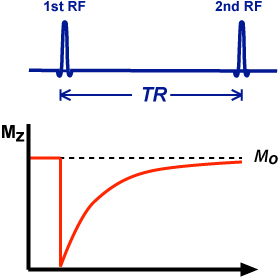MRI Physics
THE BASIC PROCESS The way MR images are generated is complicated and is much harder to understand than plain radiography, CT and ultrasound. It has strong underpinnings in physics which must be understood before any real sense of 'how it works' is gained. What follows is a very abbreviated, 'broad strokes' description of the process. Essentially, the process can be broken down into four parts: 1. Preparation 2. Excitation 3. Spatial encoding 4. Signal acquisition Preparation The patient is placed in a static magnetic field produced by the magnet of the MR scanner. In living tissues there are a lot of hydrogen atoms included in water molecules or in many different other molecules. The proton, the nucleus of hydrogen, possesses an intrinsic magnetisation called spin. The spin magnetization vector precesses (rotates) around the magnetic field at a frequency called the Larmor frequency, which is proportional to the magnetic field intensity. The ...



Comments
Post a Comment